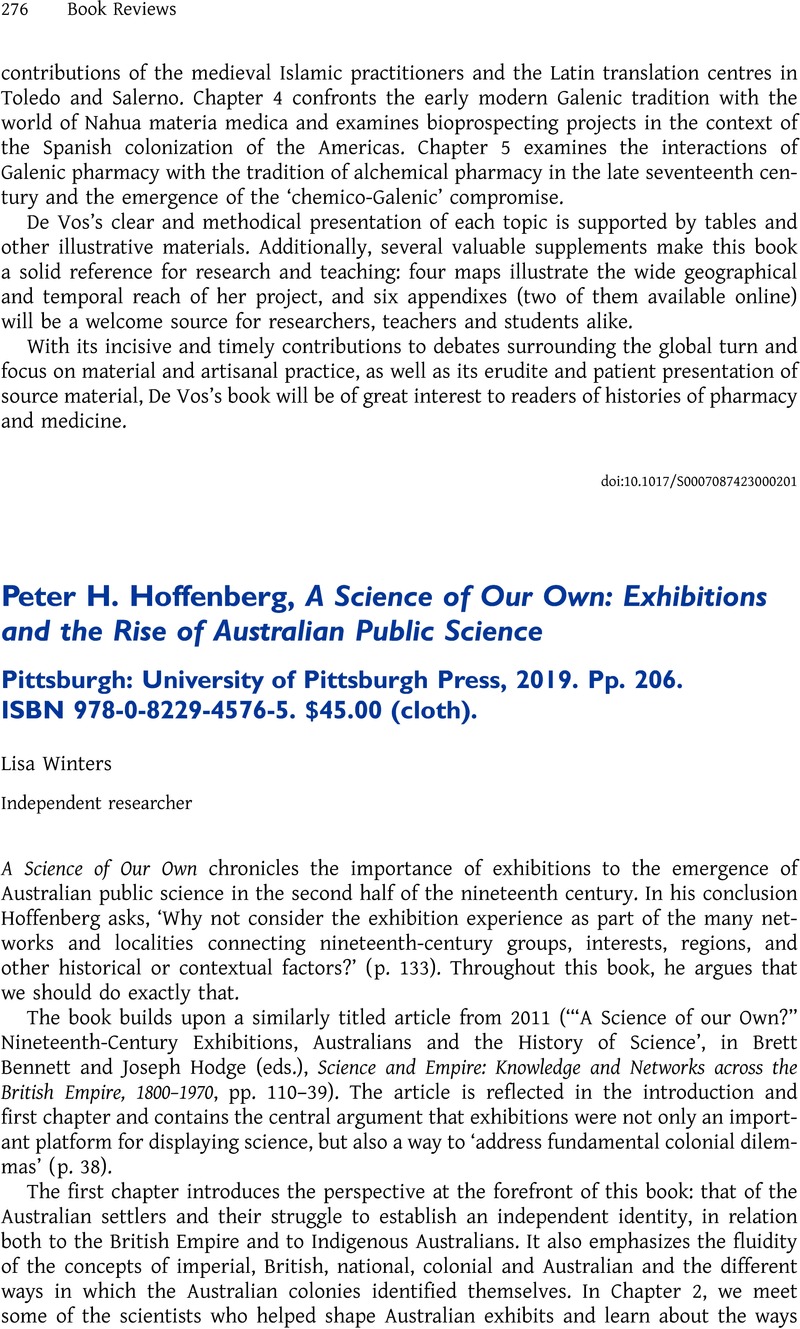No CrossRef data available.
Article contents
Peter H. Hoffenberg, A Science of Our Own: Exhibitions and the Rise of Australian Public Science Pittsburgh: University of Pittsburgh Press, 2019. Pp. 206. ISBN 978-0-8229-4576-5. $45.00 (cloth).
Review products
Peter H. Hoffenberg, A Science of Our Own: Exhibitions and the Rise of Australian Public Science Pittsburgh: University of Pittsburgh Press, 2019. Pp. 206. ISBN 978-0-8229-4576-5. $45.00 (cloth).
Published online by Cambridge University Press: 14 June 2023
Abstract
An abstract is not available for this content so a preview has been provided. Please use the Get access link above for information on how to access this content.

- Type
- Book Review
- Information
- The British Journal for the History of Science , Volume 56 , Special Issue 2: Science, Technology and Visual Diplomacy , June 2023 , pp. 276 - 277
- Copyright
- Copyright © The Author(s), 2023. Published by Cambridge University Press on behalf of British Society for the History of Science



